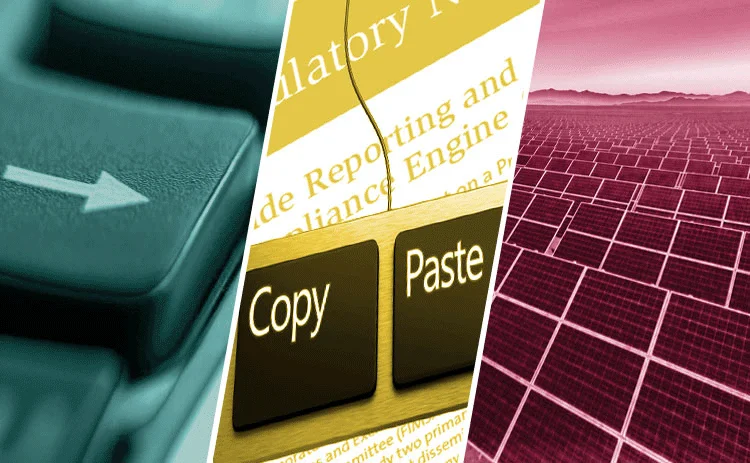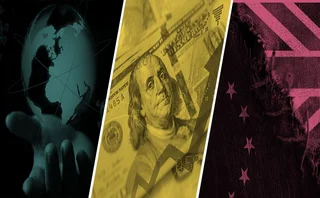
FVA pain, ethical hedging and a degraded copy of Trace
The week on Risk.net, October 31–November 6, 2020

Funding pain prompts calls to rehome FVA
Dealers push to move derivatives funding costs out of P&L following March’s outsize losses
Botched copy: Esma delivers cut and paste pastiche of Trace
Mifid transparency mishmash misses key aspects of US system it emulates, say dealers
Investors weigh merits of ESG hedging
Opinion divided over proposed tool for transferring risk of non-sustainable activities
COMMENTARY: The good, the bad, and the hedgeable
“The line separating good and evil,” wrote Alexander Solzhenitsyn in The Gulag Archipelago, “does not run between states, nor between classes, nor between political parties – but right through every human heart”. There are no perfectly good or perfectly bad people. Nor, unfortunately, are there any perfectly ethical companies – and for investment managers in the growing environmental, social and governance (ESG) sector, this is increasingly a problem.
It’s far from the only problem facing ESG investors. The biggest, of course, is the lack of solid data on firms’ ESG performance. ESG definitions and criteria vary widely from investor to investor, and the data regarding each one is often frustratingly difficult to obtain. ESG risk is also hard to model – many major ESG-related financial losses will fall into the category of conduct risk, a tail-heavy area that behaves very differently from a modelling point of view compared with all other areas of operational risk.
And then there’s the problem that many companies may fall short in some areas. Energy companies may have a fleet of coal-fired stations alongside an array of offshore wind turbines – does the one cancel out the other? Another company may enforce strict labour standards in one division, but use unsustainably-farmed ingredients in another division’s products – overall ethical, or unethical?
One answer is of course to split the company up. Energy companies such as Germany’s E.on and RWE did so years ago – much as the financial crisis led some European institutions to split into “good banks” with supposedly viable portfolios and “bad banks” holding junk debt, the generators divided themselves into clean and dirty halves. But the process wasn’t simple – the clean halves didn’t always flourish, and the split produced new risk management challenges.
But the split isn’t always possible, and even if it is, it’s a long haul for investors to push the company into such a major strategic shift. The alternative, thinks CalSTRS’ chief investment officer Christopher Ailman, is ESG hedges – swaps that would allow an investor to isolate the undesirable part of a business and avoid both the risk and the income associated with it. From the investor’s risk and return point of view, it would look as though the unethical business had simply been divested.
Other investors are dubious, Risk.net found this week. A teachers’ pension fund might not want exposure to arms manufacturing, so that could instead be packaged for a police retirement fund, but it is not going to be possible to find neat solutions like this in every case. And it won’t be easy to separate out unethical from ethical business lines. Splitting a generator fleet is one of the easiest cases imaginable, and even that posed challenges. Data problems come into play as there are inconsistent definitions of ESG.
But apart from the practicalities, there are two bigger issues here: first, ESG investing is driven by ethical principles, and these are not amenable to hedging. (To take an extreme case, someone with an ethical or religious objection to alcohol won’t want their money invested in a bar, probably not even if you have hedged away all the revenue streams except those associated with lemonade and peanuts.) Second, ethical issues are not simply avoidable or hedgable exposures in the way that “borrowing in USD” or “buying a lot of aviation fuel” are – they are symptoms of the way in which the company’s management behaves.
One bit of unethical behaviour – poor labour standards, poor governance, bad supply chain practice – on the surface will indicate that there may be many more as yet undiscovered. No swap will allow investors to hedge away all the risks associated with immoral management practice – the only answer is to avoid them altogether.
STAT OF THE WEEK
European banks say loans to small and medium-sized enterprises (SMEs) are likely to decline in creditworthiness over the next year. The biggest exposures were at Nordic giant Danske Bank (51% of its corporate loan portfolio), along with French giants Crédit Agricole (50%), Group BPCE (46%) and UK lender Lloyds (44%).
QUOTE OF THE WEEK
“Because the government looks like it will still be divided, we have a better sense of how things will likely play out. A Democratic sweep would have produced more uncertainty [on policies to be enacted] so the market has more clarity on the gridlock that will likely occur on everything” – Andrew Chin, Alliance Bernstein
Further reading
Only users who have a paid subscription or are part of a corporate subscription are able to print or copy content.
To access these options, along with all other subscription benefits, please contact info@risk.net or view our subscription options here: http://subscriptions.risk.net/subscribe
You are currently unable to print this content. Please contact info@risk.net to find out more.
You are currently unable to copy this content. Please contact info@risk.net to find out more.
Copyright Infopro Digital Limited. All rights reserved.
As outlined in our terms and conditions, https://www.infopro-digital.com/terms-and-conditions/subscriptions/ (point 2.4), printing is limited to a single copy.
If you would like to purchase additional rights please email info@risk.net
Copyright Infopro Digital Limited. All rights reserved.
You may share this content using our article tools. As outlined in our terms and conditions, https://www.infopro-digital.com/terms-and-conditions/subscriptions/ (clause 2.4), an Authorised User may only make one copy of the materials for their own personal use. You must also comply with the restrictions in clause 2.5.
If you would like to purchase additional rights please email info@risk.net
More on 7 days in 60 seconds
Bank capital, margining and the return of FX
The week on Risk.net, December 12–18
Hedge fund losses, CLS and a capital floor
The week on Risk.net, December 5–11
Capital buffers, contingent hedges and USD Libor
The week on Risk.net, November 28–December 4
SA-CCR, SOFR lending and model approval
The week on Risk.net, November 21-27, 2020
Fallbacks, Libor and the cultural risks of lockdown
The week on Risk.net, November 14-20, 2020
Climate risk, fixing Libor and tough times for US G-Sibs
The week on Risk.net, November 7-13, 2020
Basis traders, prime brokers and election risk
The week on Risk.net, October 24-30, 2020
Covid bank tests, swap fix deferred and SOFR switch
The week on Risk.net, October 17-23, 2020







